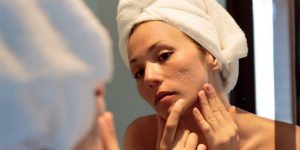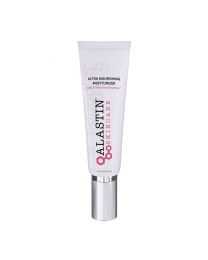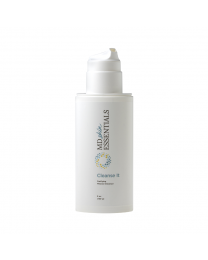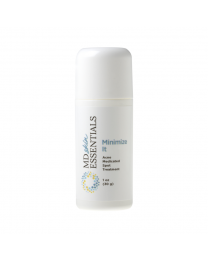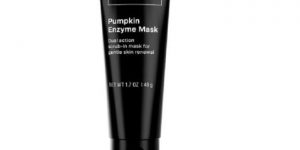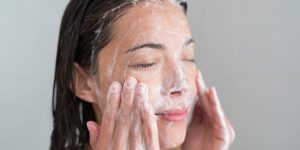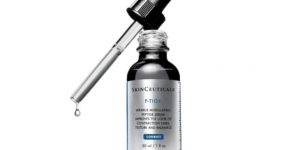Free Shipping Over $100
Free Samples With Every Purchase
Auto Replenishment Available
Authorized Reseller
ACNE Face Mapping – What is Your Acne Trying to Tell You?

Acne is one of the most common skin health concerns. While it’s most often associated with the teen years, there are types of acne that affect children and adults as well. According to Amanda Caldwell, NP of U.S. Dermatology Partners Warrensburg, Missouri, “Many people take a one size fits all approach to caring for acneic skin, but there are many different underlying causes of acne that require unique treatment approaches. A current skin health trend, acne face mapping, uses the facial regions where acne is most common to help people understand the underlying causes of acne. While this approach isn’t foolproof, it does offer a pretty accurate representation of common acne development patterns.” In this blog, Dermatology Provider Amanda Caldwell talks through the basics of developing an acne face map and how it can help patients manage acne breakouts.
What is Acne Face Mapping?
Understanding, managing, and treating acne through face mapping is an approach that developed out of traditional Chinese medicine. The theory was uncovered when medical practitioners thousands of years ago noticed a connection between where acne developed and the underlying causes of acne. By making this connection, early medical caregivers were better able to help patients manage acne. Caldwell says, “While this approach to diagnosing and treating acne is based on principles that were developed thousands of years ago, face mapping acne really is more than the latest skincare trend. It has basis in fact and is supported by modern medicine. The location or focal point of acne development on the face is one of the factors I still utilize today to help my patients develop acne treatment plans.”
Combining Chinese Face Mapping with Modern Acne Causes
Also known as mien shiang, the original Chinese acne face map related acne and other skin concerns to potential health issues in specific organs. Traditional Chinese medicine indicated that skin issues in the following facial areas correlated with specific whole-body health concerns:
- • Forehead – digestive track issues, specifically small intestine concerns.
- • Temples – bladder health struggles.
- • Between the eyebrows – liver and detoxification issues.
- • Above eyes – heart conditions.
- • Under eyes – kidneys and bodily fluid buildup.
- • Nose – heart conditions.
- • Cheeks – respiratory issues, stomach health, and illnesses of the spleen.
- • Mouth – stomach and colon concerns.
- • Chin and jaw – hormonal and reproductive system changes.
While this traditional approach to acne mapping doesn’t exactly reflect current science, there is definitely some truth to the idea that the causes of acne and other skin health concerns may be linked to the location of breakouts on the face. Today, we understand that the underlying causes of acne may not be directly correlated to where it develops on the face, but it’s still an important diagnostic indicator to guide acneic skincare recommendations from dermatologists. When dermatologists see acne breakouts, these are some of the common acne locations and causes we relate to acneic skin:
- • Forehead acne – stress, digestion, and poor liver function.
- • Cheeks – oily skin, excess sugar consumption, and exposure to environmental aggressors.
- • T-Zone – excessive oily production, leading to clogged pores.
- • Nose – heart or digestive health issues.
- • Chin and jawline – hormonal imbalance.
How to Address and Treat Acne Based on Its Location
Before diving into skincare tips based on location, it’s important to develop an overall routine that you can keep up with consistently to minimize acne breakouts. An effective acne-fighting skincare routine should include:
- • Cleanser – morning and evening – wash your face with an anti-comedogenic cleanser that’s good for your skin type. MD Skin Essentials Cleanse It is a great option. It cleans skin gently while reducing oiliness, minimizing the appearance of pores, and reducing inflammation.
- • Toner – morning and evening – toner balances skin’s pH and deep cleans into pores, which is great for preventing and clearing acne breakouts. EltaMD Skin Recovery Essence Toner is oil-free and packed with nutrients that improve the health of skin. This toner calms skin and promotes healing during breakouts. EltaMD Skin Recovery Essence Toner also works to keep skin clear between breakouts by balancing moisture and helping skin absorb products.
- • Exfoliation – morning and evening – in the morning, you may want to sub in an exfoliating cleanser periodically. The SkinCeuticals Glycolic Renewal Cleanser is a great option to gently dissolve away dead skin cells without causing irritation. In the evening, use retinol to exfoliate skin. Retinol is an exfoliating product, but retinol also increases skin cell turnover and promotes the production of collagen and elastin. Skinbetter Science AlphaRet Exfoliating Peel Pads are an easy option to add to your skincare routine. The combination of retinol and alpha hydroxy acid ensures optimal results while minimizing potential irritation.
- • Acne spot treatments – morning, evening, and as needed – acne spot treatments clear up blemishes more quickly. Many spot treatments for acne simply dry out the blemish. While this certainly shrinks the blemish, it can also lead to itchy, flaky skin. MD Skin Essentials Minimize It is an effective acne spot treatment that reduces redness and inflammation, shrinks pimples, and repairs the skin’s healthy, natural barrier.
- • Moisturizer – morning and evening – many people with acne-prone skin avoid moisturizing because they believe it will increase oiliness. However, using a good, non-comedogenic moisturizer will reduce the amount of oil produced by skin. ALASTIN Skincare Ultra Nourishing Moisturizer with TriHex Technology is a lightweight, easily absorbed moisturizer that hydrates skin without causing greasiness or clogging pores.
- • Sunscreen – morning only – many of the treatments for acne increase risk for sun damage, and sun exposure during an acne break often leads to inflammation and discomfort. Unfortunately, many sunscreens are heavy, greasy, and pore clogging. SkinCeuticals Physical Fusion UV Defense SPF 50 is a lightweight and effective sunblock. It’s a physical sunscreen that doesn’t leave skin looking chalky, but it also doesn’t clog pores.
Tips for Treating Forehead Acne
Acne breakouts above the forehead are often linked to high stress levels. Alleviating stress boosts the efficacy of an anti-comedogenic skincare routine. Digestive and liver problems may also be linked to inflammatory forehead acne. Working with a physician to manage digestive concerns and liver dysfunction can improve skin health. You should also choose non-comedogenic skincare products that are calming like those listed above.
Remedies for Cheek Acne
Oily skin, excess sugar consumption, and environmental irritants are most often the culprit for acne on the cheeks. Choosing oil-free skincare products and maintaining a good cleansing and toning routine will go a long way toward keeping blemishes clear on the cheeks. Additionally, you may want to limit or cut out sugar from your diet, especially during acne breakouts. If an environmental irritant like a chemical, fragrance, food, or plant is causing the acne flareup, it’s important to identify it and protect skin from this substance.
General Skincare Tips for the T-Zone
Excess production of the body’s natural oil called sebum is often the underlying cause of breakouts that impact the T-zone, which is the area across the forehead, down the nose, and onto to the chin. When this area is very oily, dead skin cells, bacteria, grime, and other materials and residue become trapped, clogging pores and leading to breakouts. Treatment plans for T-zone acne will include oil-reducing products and deep cleaning pores regularly as well as exfoliating to remove dead skin cells before they can clog pores.
Managing Nose Acne
Heart health and digestive issues can be underlying causes of pimples on the nose. Changes in blood pressure and cholesterol are known to cause acne breakouts in this area where blood flow occurs so close to the surface of skin. By managing heart health, nose acne often clears up. The digestive connection is less clear, but it may have something to do with heart health since eating certain foods that can cause stomach upset, like spicy cuisine or foods high in saturated fats, also cause increased blood pressure and cholesterol. Eating a varied and nutrient-dense diet and exercising regularly in addition to maintaining a good skincare routine can make a big difference.
Solutions for Chin and Jawline Acne
Acne on the chin and jawline, as the ancient Chinese medical practitioners determined, is closely linked to hormones. Women are at much higher risk for chin acne, especially during their teen years and when they are pregnant due to the hormone fluctuations. For chin acne, it’s essential to keep skin clean and exfoliated. You should also utilize a lightweight, easily absorbed moisturizer to prevent excess oil production. When possible, work with a physician to develop a plan to balance hormones. Improving diet, getting regular exercise, managing stress, and sleeping well can all improve hormone levels and reduce acne breakouts.
Additional Tips for Preventing and Managing Acne
Acne treatment isn’t just about what skincare products you use or what acne treatments you apply. According to Caldwell, “If acne face mapping teaches us nothing else, it certainly makes it clear just how deeply intertwined our skin health and whole-body health are. In addition to taking care of your skin, it’s important to take steps to keep your body healthy when you’re managing acne. The healthier the body is, the more energy and nutrients are available to keep skin looking and feeling its best.” Below, Amanda Caldwell shares some everyday care tips to maintain healthy skin:
- • Stay hydrated – excess oil production that leads to acne breakouts can occur when skin lacks hydration. Oil production increases to keep skin hydrated. When people are better hydrated, skin receives adequate moisture and oil production is balanced.
- • Eat a balanced diet – the body utilizes nutrients from food to maintain, repair, and regenerate cells and tissues throughout the body. To keep internal systems running smoothly, the body uses energy and nutrients from food for the most essential functions like blood flow and oxygen. That means nutrients make their way to the skin only after these needs are met. Eating a nutrient-rich diet ensures the whole body receives the nutrients it needs to look and feel its best.
- • Get enough sleep – the body regenerates as we sleep. Inadequate sleep leaves us feeling exhausted or struggling to get through the day, but it can also cause dark circles under the eye and dull skin as cell turnover slows. Slower cell turnover can increase risk for clogged pores.
- • Exercise – when we exercise, our blood flows through the body. Circulation is good for skin. It delivers nutrients to the surface of skin and clears out pores.
- • Manage stress – cortisol is a hormone released when we experience increased stress levels. Cortisol is known to cause skin inflammation. This inflammation can cause pores to become irritated and red, making acne breakouts more severe and creating the perfect environment for an acne breakout.
- • Partner with a professional – working with a dermatologist is essential for anyone with acne. Dermatologists help patients understand their acne’s cause and develop an ongoing care plan to manage acne and its symptoms.
Understand How Acne Impacts You & Keep Skin Healthy
According to Caldwell, “Acne can be difficult to treat effectively. There are a variety of factors that affect how well your daily skincare routine and acne treatment options work. From hormonal levels to how much stress you’re dealing with, no two people have acne in the same places or to the same severity, and no two people need the same skincare routine or acne treatment. Understanding acne locations can help you find the right skincare products and routines to achieve healthy skin. Dermatologists provide personalized treatment recommendations unique to your needs.”
Partner with a Dermatologist to Manage Acne
When you’re ready to get started working with a dermatologist to manage acne, don’t hesitate to reach out to the team at U.S. Dermatology Partners to request a consultation visit. We make it easy to get started working with our team. Simply take a few moments to submit a scheduling request form. One of our local dermatology team members will be in touch to finalize the details of your upcoming appointment.

